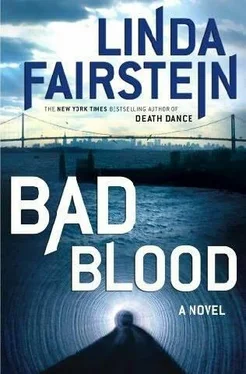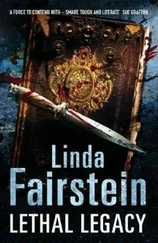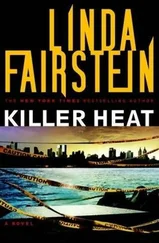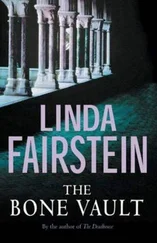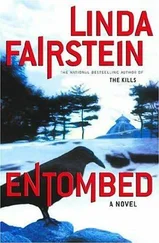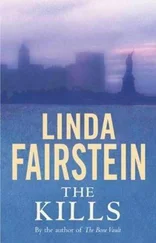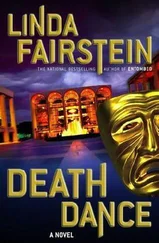It embarrassed me to realize I had never given much thought to these things. I knew that cholera patients developed an insatiable need for drink, and that ironically, the disease is caused by exposure to contaminated water in the first place.
“You know how many New Yorkers died of cholera in 1832?” Golden asked.
“No idea,” I said.
“More than thirty-five hundred people. Thousands more fled to the country just to avoid the spread of the disease. There simply wasn’t any clean water in the city by that point in time. Not a drop.”
“So what did they do to get it?” Mercer asked.
“Same thing the Romans did, three hundred years before the birth of Christ,” Golden said. “It’s been our model for all this time-the eleven ancient aqueducts built by Roman slaves, all working from the basics of gravity and the downhill flow of water, brought millions of gallons a day into that city from rivers and lakes in the faraway hills.”
“So we’ve got the Croton watershed,” Mike said, referring to what was today a twelve-reservoir system, created in Westchester County by harnessing the Croton River.
“Exactly.”
“But that’s almost fifty miles north of the city,” Mercer said.
“It’s a piker, compared to the distance covered by the original Italian aqueducts,” Golden said. “The Croton River starts much farther north, in Dutchess County. Its watershed covers more than three hundred and sixty square miles, capable of putting out four hundred million gallons a day.”
Mike gave out a low whistle. “And what gets it to Gotham?”
“First they had to create a plan to dam the river, by flooding acres and acres of homes and farmland in the area. Breaking the hearts and spirits of everyone who had settled in that fertile part of the state. Just like the government does today-pay them a few bucks and claim eminent domain.”
Golden continued, “Miles of pipeline were laid, zigzagging south through Westchester County, cutting through rock ridges and valleys, water being forced down the hills by the sheer force of gravity and then entering Manhattan in very dramatic fashion via the High Bridge.”
That fabulous structure, the oldest remaining span connecting the island to the mainland, must have been spectacular when it was built in the 1840s. It had sported fifteen of the same elegant arches that characterized the Roman aqueducts and had carried water to New York County over the Harlem River.
“How big were those tunnels?” Mike asked.
“Only eight feet wide.”
“And how was the water distributed once it reached Manhattan?” I asked.
“Well,” said Golden, “it flowed into the Receiving Reservoir, which looked like a giant fortress, capable of holding one hundred and eighty million gallons of water.”
“But where was that?”
“It was built on York Hill, Alex. You know where that is? The land all belonged to one gentleman, a fellow named William Mathews, and it was pretty prime real estate, both then and now.”
Mercer laughed, but the name meant nothing to me. “A brother, if I’m not mistaken. Deacon of the African Union Methodist Church, back in the 1840s. That neighborhood was the Harlem of its day.”
“Where?” I asked.
Golden answered, “Smack-dab in the middle of Central Park. The Receiving Reservoir fed fresh water to Manhattan until 1940, when it was drained and completely filled in to create the Great Lawn.”
“So recently-just a few generations ago? That doesn’t seem possible.”
“Take it one step further. The water flowed downtown from that facility to what was called the Distributing Reservoir. That’s where it was provided to homes and businesses in the city. Fifth Avenue and Forty-second Street. Imagine that where the New York Public Library now stands was once another enormous fortification filled with water.”
“And it’s come to us that way for almost two centuries,” Mercer said.
Golden stroked his beak and nodded. “Croton sort of maxed out at the beginning of the twentieth century. So the engineers just kept digging farther north, reaching into the mountains above the city, tapping into the Catskills and the Delaware River.”
Mike said, “I got a whole new respect for all the liquid gold.”
The door to the shack opened and a workman stuck his head in and called out, interrupting Mike, “Hey, George! You got an all-clear in the shaft.”
“Thanks a lot. The cops tell you anything else?”
We all turned to listen to the answer. “They’ve been doing that test all day-what do you call that stuff?”
“DNA,” I said. My three favorite letters of the alphabet. The science hadn’t even been reliable enough to be admissible in any courtroom in America until 1989, when it took six months for a lab to return a preliminary result to police and prosecutors who submitted evidence to the few facilities then capable of doing the work. Now it had reached the point that we could get a positive identification by dusk on human remains found at daybreak at a homicide scene like this.
“Yeah, they’re working on those-um, those pieces of flesh in a truck down the street. It’s got to be Duke. Duke and those two guys from Tobago.”
“What two guys?” Mike asked.
George stood up and reached for a slicker from a peg on the wall. “Tough break. There’s nobody any one of our men would rather have working shoulder to shoulder with them than Duke Quillian. Third generation in the hole-a real lifer. And these other two were just kids. Cousins who came up from the Caribbean to work in London with their uncle. Did a big piece of the Chunnel dig. Moved to the States just a couple of months ago.”
“Who reported them missing?” Mike asked. “Their families?”
“Nope. Neither one had any relatives here. Shared an apartment in Queens. They were set to work the evening shift yesterday. Landlord says they never came home.”
“These guys work evenings, too?” I asked. It was hard enough to imagine being so far down in the bedrock in daylight, but even creepier to think of being in that tunnel in the dark.
“Twenty-four/seven, Alex. We’re a few years behind our due date.”
Mike followed George toward the door. “What’s the difference, Coop? There’s no natural light down there anyway.”
“You game to go down with me?” George asked, pointing a finger and sweeping it around from Mike to Mercer to me.
The answer caught in my throat, but Mike and Mercer were quick to say yes.
George stood next to the solemn group of sandhogs who had just heard the news about their Tobagonian colleagues. “I need one of you guys to take us in, okay?”
Five of them stood up as though they hadn’t heard the question and excused themselves to get out the door. The others, elbows on the table and their chins resting on their hands, ignored Golden and listened to the commercial for hemorrhoidal cream as intently as they had followed the news stories of the blast.
“Bobby-Bobby Hassett,” Golden said to the man leading the group out the door. “Be a gent, will you? One way or the other, we’re going down there.”
“Sorry, Georgie. I’ve been helping since daybreak. Got a ride home waiting for me,” Hassett said, holding the door open for some of the others and then following them out.
“C’mon, somebody step up to the plate,” he said to the ones who remained. “Give me a hand. These detectives are here to figure this out, make us safe.”
Water Tunnel #3 had been designated a crime scene for the purpose of the investigation-to determine whether the blast was intentional or accidental. Even an accident could be declared a criminally negligent homicide.
No one responded.
Golden patted the back of the sandhog closest to him. “Get your gear on and come along.”
Читать дальше
